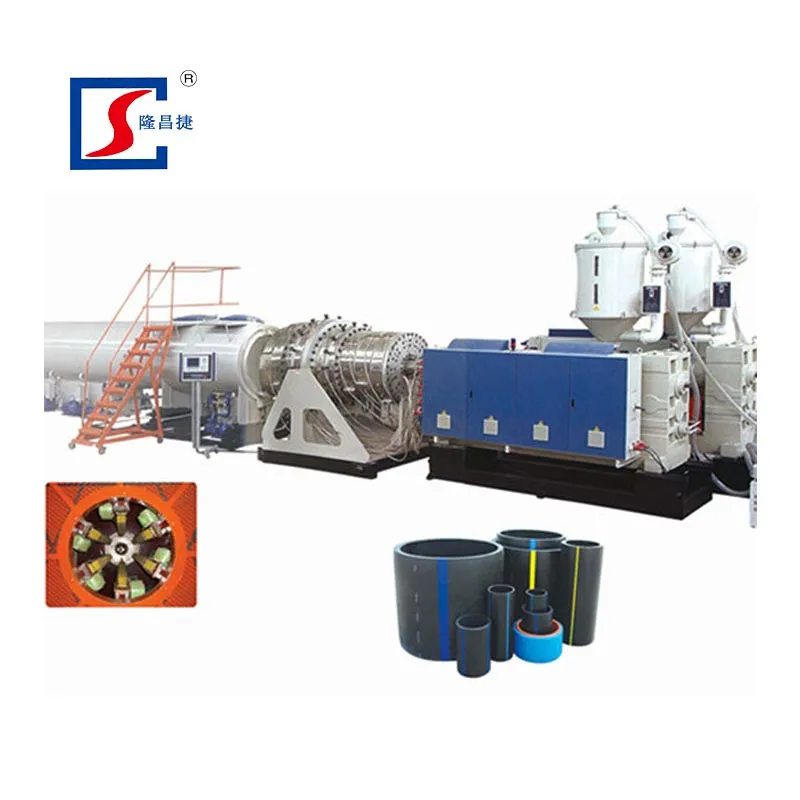Understanding Pipe Production Lines: Types, Processes, and Applications
2024-11-28
Pipe production lines are integral to industries ranging from construction and agriculture to oil and gas. These systems are designed to manufacture pipes in various materials, dimensions, and applications efficiently and precisely. This blog will explore the components, processes, and benefits of pipe production lines and the types of pipes they produce.
1. What is a Pipe Production Line?
A pipe production line is a complete system of machinery and equipment that manufactures pipes. It typically includes the following stages:
- Material Preparation: Raw materials like metals, plastics, or composites are prepared for processing.
- Forming and Shaping: Pipes are formed into their desired shapes and sizes using molds or extrusion dies.
- Heating and Cooling: Heating ensures proper shaping, while cooling solidifies the material.
- Cutting and Finishing: Pipes are cut to length and subjected to surface finishing, marking, or coating.
- Quality Control: Pipes undergo rigorous testing to meet industrial standards.
2. Types of Pipe Production Line
The choice of pipe production line depends on the material and application. Common types include:
a. Plastic Pipe Production Line
- Materials: PVC, HDPE, PPR, PE, or PP.
- Applications: Plumbing, irrigation, gas supply, and drainage systems.
- Process: Plastic pellets are melted, extruded, shaped, cooled, and cut to the desired length.
- Special Features: Can produce pipes with single or multi-layer structures.
b. Steel Pipe Production Line
- Materials: Carbon steel, stainless steel, or alloy steel.
- Applications: Oil and gas pipelines, structural supports, and industrial uses.
- Process: Sheets or strips are welded into cylindrical shapes or formed through seamless extrusion.
- Special Features: Includes coating processes for corrosion resistance.
c. Concrete Pipe Production Line
- Materials: Cement, sand, and aggregates.
- Applications: Sewage systems, stormwater drainage, and irrigation.
- Process: Uses molds and vibration technology to form and cure pipes.
- Special Features: Often automated for high-capacity production.
d. Composite Pipe Production Line
- Materials: Combinations of plastics, fiberglass, or metals.
- Applications: Chemical transportation, high-pressure pipelines, and offshore platforms.
- Process: Layers of materials are combined using automated winding or extrusion.
- Special Features: Offers high strength, corrosion resistance, and lightweight design.
3. Key Components of a Pipe Production Line
a. Extruder or Forming Machine
- For plastic pipes, an extruder melts the material and pushes it through a die.
- For metal pipes, a forming machine shapes sheets or rolls into cylinders.
b. Cooling System
- Ensures that the pipe retains its shape after being formed. Water baths or air cooling are common methods.
c. Cutting Machine
- Precisely cuts pipes to the required lengths. This can be manual or automated.
d. Haul-Off Unit
- Pulls the pipe through the production line at a consistent speed to maintain quality.
e. Coating and Finishing Equipment
- Adds protective coatings or finishes for durability, aesthetics, or corrosion resistance.
f. Control System
- A computerized system manages temperature, pressure, and speed for efficiency and consistency.
4. Benefits of Pipe Production Lines
- Efficiency: Automated systems ensure high-speed and high-volume production.
- Versatility: Capable of producing pipes for diverse applications.
- Customization: Adjustments in machinery can cater to various pipe sizes, materials, and coatings.
- Quality Assurance: Modern lines include advanced testing systems for quality control.
- Sustainability: Many lines are designed for energy efficiency and material recycling.
---
5. Challenges in Pipe Production
- Material Selection: Ensuring compatibility with the intended application.
- Precision Requirements: Maintaining dimensional accuracy and uniformity.
- Environmental Regulations: Adhering to standards for emissions and waste management.
- Maintenance: Regular upkeep is crucial to avoid downtime.
6. Applications of Pipe Production Lines
Construction:
- Plumbing and drainage systems.
- HVAC ducting.
Oil and Gas:
- Transporting crude oil, natural gas, and other fluids.
Agriculture:
- Irrigation systems, including drip and sprinkler pipes.
Industrial:
- Chemical pipelines, cooling systems, and structural supports.
Municipal Projects:
- Sewage and stormwater systems.
- Water supply networks.
Conclusion
Pipe production lines are a cornerstone of modern infrastructure and industrial processes. Whether producing durable steel pipes for oil pipelines or lightweight plastic pipes for irrigation, these systems combine technology and precision to meet global demand. By understanding the types, processes, and applications of pipe production lines, businesses can select the right solution to meet their needs effectively.
Longchangjie Machinery Co., Ltd. is a manufacturer of pipe production line in Qingdao, China. It adopts the extrusion process of pipe head based on the Austrian Cincinnati technology, which has good plasticizing effect, fast extrusion speed and high pipe Surface finish, the product has the advantages of fast production speed, convenient operation, reliable performance and so on, reaching the international leading level.Visit our website at www.qdlongchangjie.com to learn more about our products. For inquiries, you can reach us at [email protected].


